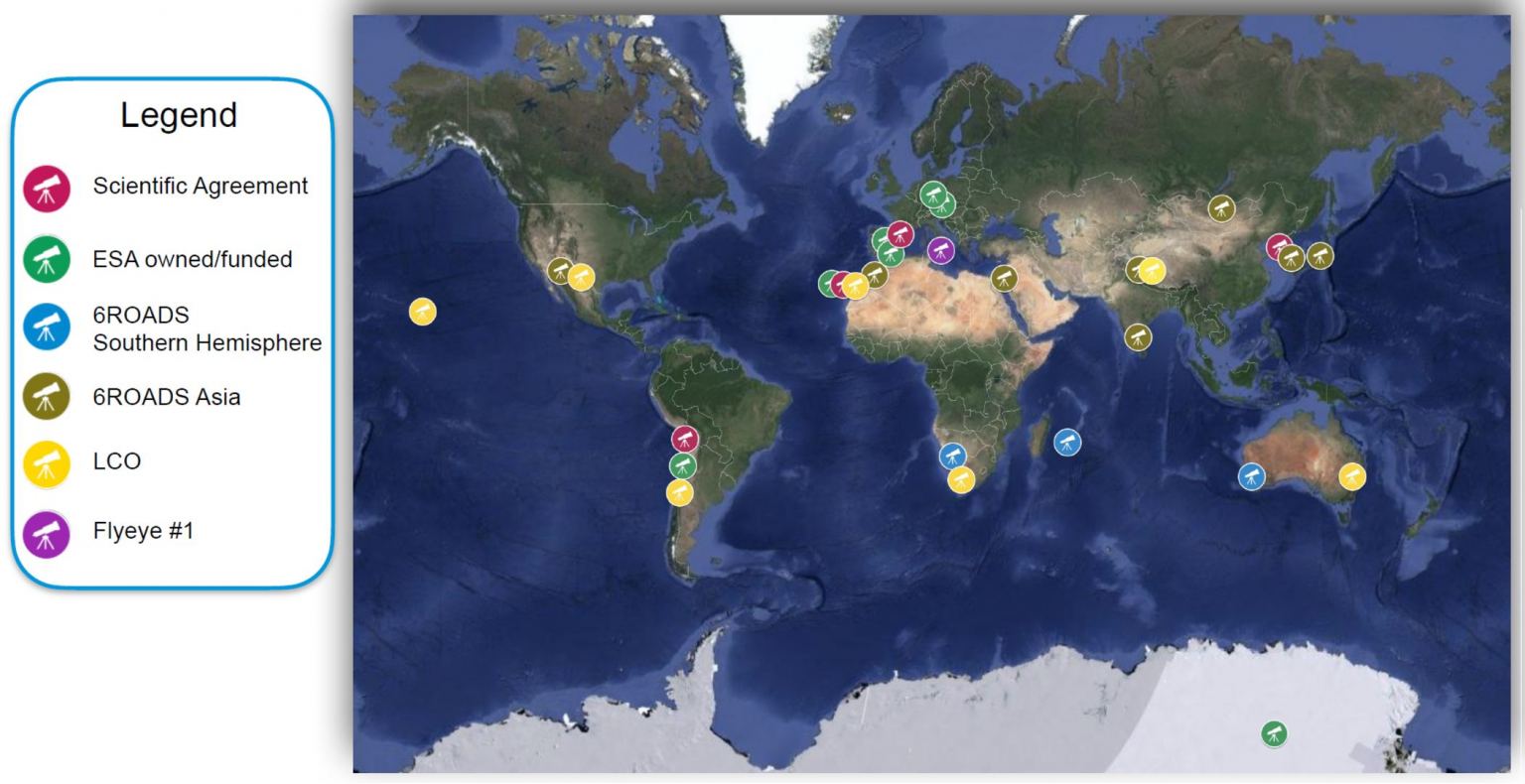Will a Meteor Strike Earth Again
An Asteroid Predicted to Hit Earth in 2023 Has Turned Out to Exist Safe
Before this year, the discovery of a potentially chancy asteroid took astronomers on a roller coaster ride.
On 6 January 2022, astronomers at the Mount Lemmon Observatory in Arizona discovered an asteroid roughly lxx-meters (230 ft) across. Based on their initial observations, it appeared this object – called '2022 AE1' – could potentially striking World on its next pass, on iv July 2023.
Since any uncertainties in an asteroid's orbit are highest in the hours merely after its discovery, astronomers at several different observatories scrambled to make follow-up observations – which usually rule out any future impacts.
However, based on the first 7 nights of observations, the run a risk of impact appeared to increase. Asteroid 2022 AE1 was flagged for a potential future impact by the Asteroid Orbit Determination (AstOD), an automated system astronomers around the earth use to assess the asteroid risk.
Furthermore, the asteroid was given ane of the highest rankings on the Palermo Scale, a ranking which astronomers use to categories and prioritize impact risks. Both ESA and NASA published the information on their Near Earth Object (NEO) data portal websites, allowing anyone – such as interested amateur astronomers – to take a look.
Even more worry-inducing was the following week, where no observations could be made considering the total Moon blocked out whatever views of this asteroid from Globe.
But thankfully, when the asteroid was able to exist tracked again, the accumulating data on the asteroid's path revealed the take chances of impact was dramatically decreasing over time. It has since been confirmed that 2022 AE1 will not bear on Earth any time in the foreseeable time to come.
"In my almost ten years at ESA I've never seen such a risky object," said Marco Micheli, astronomer at ESA's Near-Earth Object Coordination Centre (NEOCC).
"It was a thrill to track 2022 AE1 and refine its trajectory until nosotros had enough data to say for certain, this asteroid will not strike."
So, exactly how were astronomers able to rule out a threat that initially seemed so certain?
The very first observation of an asteroid is simply ane data point, a single dot of lite in the heaven. At this point, it's not clear what it is or where it's going. Micheli explained that a second observation is needed to reveal an object in movement, and at least three are needed to decide an orbit – where it is going and how fast information technology is moving.
Further observations refine the orbit a little more, reducing uncertainties until astronomers can be sure of where it won't go: primarily to Globe.
To assist make these determinations, astronomers use reckoner simulations to calculate the hereafter orbital path of the asteroid, and input randomly chosen initial positions and velocities that fall inside the margin of error of the observations and so far. By creating a big number of simulations, astronomers tin calculate the probability that any particular path will actually hit Earth.
For example, if 1 one thousand thousand different possible orbits are false and simply i of those leads to an bear upon, that means the odds of the asteroid hitting Earth are a one thousand thousand to one.
 ESA has access to a global network of asteroid observing telescopes pillars. (ESA)
ESA has access to a global network of asteroid observing telescopes pillars. (ESA)
What usually happens is that with more observations and more data, the adventure zone narrows and the corridor of the asteroid's hereafter path moves away from Earth, dropping the chance percent.
And with the network of observatories around the world that are focused on planetary defence force – i.e., searching the skies for incoming asteroids and comets – multiple observations and speedily rule out whatever space rocks that aren't a threat.
In the instance of 2022 AE1, observations after the full Moon had waned provided the data needed to show that the take a chance level calculated from early observations was wrong. With more information the take chances level crashed – getting shut to goose egg – and with that, the squad moved on.
"The data was clear, confirmed the next morning by our counterparts at NASA – asteroid 2022 AE1 poses no touch adventure," said Laura Faggioli, most-Earth object dynamicist in the NEOCC who computed the orbit of 2022 AE1 throughout the observation period.
"Had 2022 AE1's path remained uncertain we would have used any ways possible to go on watching it with the biggest telescopes we accept. As it was removed from our risk listing, nosotros didn't need to follow it anymore – time to motility onto the next."
ESA said some cracking observers will continue to monitor the asteroid, confirming the projections; we now know that in early July 2023, asteroid 2022 AE1 will fly past Earth at a altitude of virtually ten one thousand thousand kilometers (+/- 1 one thousand thousand km) – more than twenty times the distance of the Moon.
So, although the odds of any 1 particular asteroid ever impacting Earth are quite low, information technology is however probable that one twenty-four hours our planet will be hit past an asteroid or feel a large airburst event like the Chelyabinsk meteor in 2013.
At the current calculated rate of impacts, astronomers expect most one large asteroid to impact Earth every 100 million years or so. For that reason, both professional and amateur astronomers continue to scan the skies.
This article was originally published by Universe Today. Read the original article.
Source: https://www.sciencealert.com/risky-asteroid-confirmed-unthreatening-thanks-to-diligent-monitoring-of-our-skies
Post a Comment for "Will a Meteor Strike Earth Again"